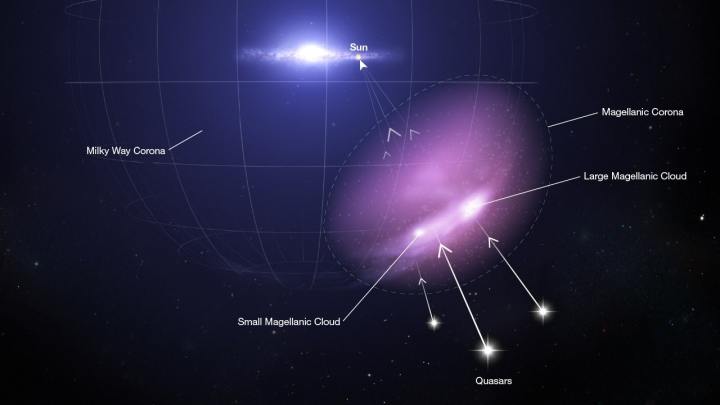Our Milky Way galaxy isn’t alone in our corner of the universe — as well as the millions of distant galaxies out there, we have two nearby neighbors. The Large and Small Magellanic Clouds are small satellite galaxies, bound to our galaxy by gravity and orbiting around it.
The forces these galaxies experience are enormous, with the gravitational force the Milky Way exerts yanking at them, but despite this, they have somehow stayed intact over billions of years. Now, research using the Hubble Space Telescope explains how this happened, revealing a protective shield that has kept these smaller galaxies safe.

The protective shield, known as a corona, is made up of hot supercharged gas and surrounds the Magellanic clouds. This keeps gas within the galaxies, which is vital as it is what allows them to continue to form new stars. Stretching 100,000 light-years from the dwarf galaxies, the corona has prevented the more massive Milky Way from pulling away all of its gas. “Galaxies envelop themselves in gaseous cocoons, which act as defensive shields against other galaxies,” explained one of the researchers, Andrew Fox of the Space Telescope Science Institute, in a statement.
These shield structures had been theorized by astronomers before but had never been observed because they are very hard to see. The researchers had to dig through archival Hubble data to look at quasars, which are extremely bright. They are so bright that they make the shield visible as a haze, and by looking at 28 quasars the researchers could identify the corona. They saw more gas around the center of the Large Magellanic Cloud, which tapers off toward its edges.
“It’s a perfect telltale signature that this corona is really there,” said Krishnarao. “It really is cocooning the galaxy and protecting it.”
The research is published in the journal Nature.



